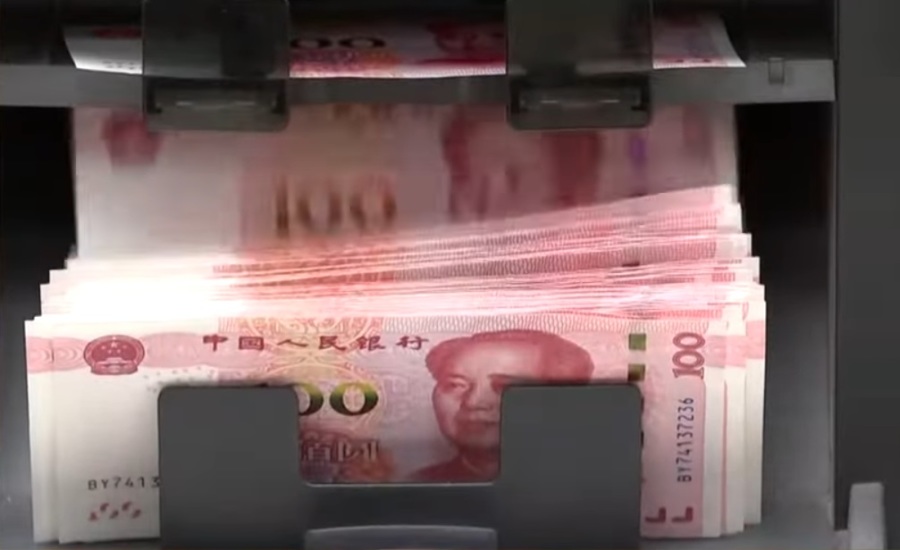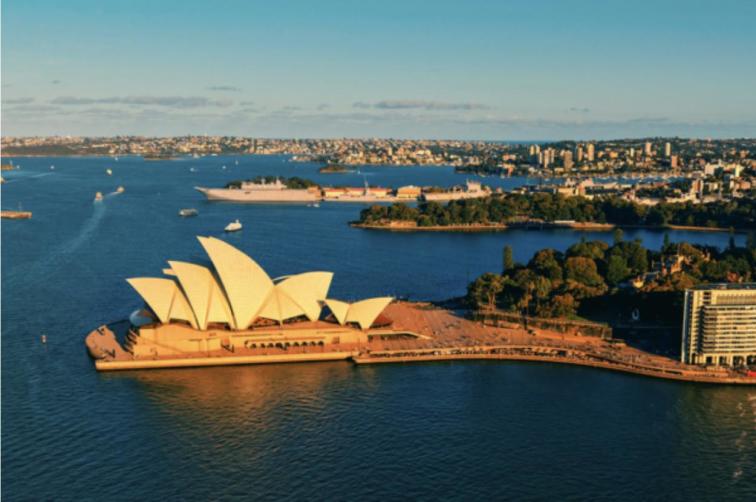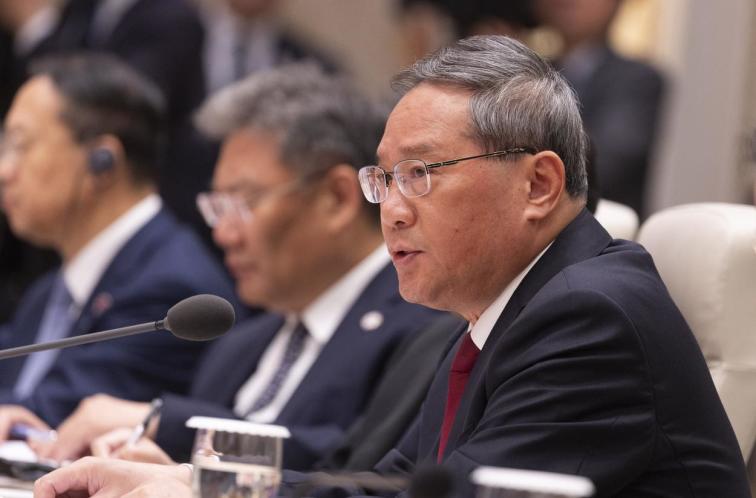Renminbi Banknotes (Video Screenshot)
[People News] Recently, the background of the Chinese woman, Yang Lanlan has become a hot topic of discussion. Some netizens suspect she is connected to Xi Jinping’s family, because only the Xi clan could possess such staggering wealth. Independent media commentator Du Wen, former Executive Director of the Legal Advisory Office of the Inner Mongolia Autonomous Region government, has calculated Xi Jinping’s astronomical book royalties, using this as evidence that the Xi family indeed has such financial power.
The 23-year-old Chinese woman, Yang Lanlan, came into public view after a car accident in Sydney, Australia, at the end of July. Her display of a luxurious lifestyle drew attention.
The Rolls-Royce she was driving was worth at least AUD 1 million. Just days after the accident, Yang Lanlan appeared at a local police station, escorted by bodyguards, wearing designer clothing valued at AUD 5,000.
Later, foreign media revealed that Yang lived in a multi-million-dollar penthouse apartment. Besides the Rolls-Royce involved in the accident, she also owned another unregistered white Rolls-Royce.
When Yang Lanlan’s accident and lavish lifestyle were reported back to China, it caused a huge stir online. Rumours spread that she had posted AUD 70 million in bail and possessed AUD 270 billion in savings, fueling further uproar.
As netizens tried to investigate her identity, they discovered almost no trace of her family or financial records. With such mysterious origins yet holding such shocking wealth, speculation about her identity exploded online.
Some claimed she was the great-granddaughter of former PRC President Yang Shangkun; others said she was the granddaughter of former Foreign Minister Yang Jiechi; still others claimed she was Xi Jinping’s illegitimate daughter. Another rumour linked her to senior military elders Yang Chengwu and Qin Jiwei, suggesting she was their great-granddaughter.
So who exactly is Yang Lanlan? Many believe she is part of the Xi family because only Xi’s family could command such wealth.
On August 12, Du Wen, in his program Inside View of China, calculated Xi Jinping’s astronomical royalties. He said that by conservative estimates, Xi has received royalties worth hundreds of billions of RMB over the years; by more neutral estimates, trillions.
It is widely known that Xi Jinping is the only leader since Deng Xiaoping who has, while in office, massively published his own “works” and simultaneously erected monuments to himself.
According to public information, The Governance of China sold 13 million copies in 2018 alone. Quotations from Xi on the Classics sold 1.1 million copies annually. Important Speeches sold 10 million copies in just two months. Other publications number over 60. Conservative estimates from past years put total circulation at 70 million copies. Critics argue that those numbers are outdated, since nearly every Xi book continues to be reprinted and reissued.
Du Wen emphasised: the key questions are—who can publish a leader’s book? How is it published? Who pays? In China, no one can publish Xi’s works without authorisation; anyone doing so without approval would be arrested.
According to directives from the Central Propaganda Department and the State Administration of Press and Publication, books involving current Politburo Standing Committee members or state leaders must be published and distributed only by designated publishing houses. No other publishers are allowed to print them.
Du Wen noted these publishing houses are directly run under the Party Centre, with government financial backing—essentially state-funded institutions.
So who pays Xi’s royalties?
Du Wen said the answer is simple: the state treasury. And it pays upfront.
For ordinary authors, royalties are usually 7–10%. For Xi, the rate was reportedly set at 10–15%. Internal sources revealed that the Central Literature Publishing House granted Xi 11%.
Unlike regular authors, Xi receives his royalties immediately after a print run is approved—not after sales, and not after the print run is completed. Each reprint or additional print generates a fresh payment to Xi right away.
Since these publishing houses are state-funded, the whole process—from printing to payment—is essentially the central government treasury presenting “gifts” to the General Secretary.
Who buys the books? Du Wen explained: the overwhelming majority of purchases come from public funds.
For example, Party directives require every cadre to study them. Schools and institutions distribute them. Nearly 100 million Party members must each own a set.
Additionally, there are overseas sales: as part of Belt and Road cultural promotion, “shared future for mankind” propaganda, embassy distributions to overseas Chinese and “friendly” individuals, and bulk purchases by foreign governments. All of this is financed by the Chinese state.
Du Wen stressed that Xi’s publications are vast in number and variety. Statistics suggest Xi’s works now number in the thousands. Cumulative print runs may reach tens of billions—or even up to 100 billion copies. At RMB 30 per book, with 11% royalties, Xi’s income reaches astronomical levels.
Du Wen concluded that Xi’s royalties are really a question of how much of the nation’s finances still belong to the people. Xi’s royalties are not a mere numbers game—they represent legalised plunder of the state treasury by political power. When a head of state’s personal wealth is separated from the national treasury by nothing more than a publishing contract and an administrative order, the very foundation of the rule of law is crushed.
Although Yang Lanlan’s alleged AUD 70 million bail and AUD 270 billion savings were debunked as rumours, netizens ask: are Xi Jinping’s astronomical royalties also just rumours? △











News magazine bootstrap themes!
I like this themes, fast loading and look profesional
Thank you Carlos!
You're welcome!
Please support me with give positive rating!
Yes Sure!